Somewhere over the English Channel, cramped in a narrow seat with a cup of slightly questionable coffee, I realize: I’m working on this article at 30,000 feet. This is the new normal I’ve mentioned before—working wherever, whenever, with whatever tools I can find. My job demands frequent (and often unpredictable) travel, which means I’ve had to rethink how I stay productive on the go. Naturally, The Spongia Project needs to evolve with me.
The Double-Edged Sword of Travel Productivity
While staying productive on the road presents its challenges, I’d argue it also has its perks. Travel, by definition, removes you from your usual environment. This might spark creativity—or at the very least, limit distractions. After all, there’s only so much to do in a hotel room before boredom forces you into productivity. Planes are another oddly effective workspace: with no internet (and no endless doom-scrolling), you’re left with nothing much more than your thoughts, and the dull hum of the engines.
But of course, travel isn’t all creative enlightenment and distraction-free deep work. The biggest hurdle? Tools.
The Right Tools for the (Ever-Changing) Job
I often recommend pen and paper for creative work—there’s something about the tactile nature of writing that helps ideas flow. But here’s the catch: lately, I’ve gotten spoiled by A3-sized notepads. I need space. A cramped hotel desk or airplane tray table isn’t exactly ideal real estate for expansive brainstorming.
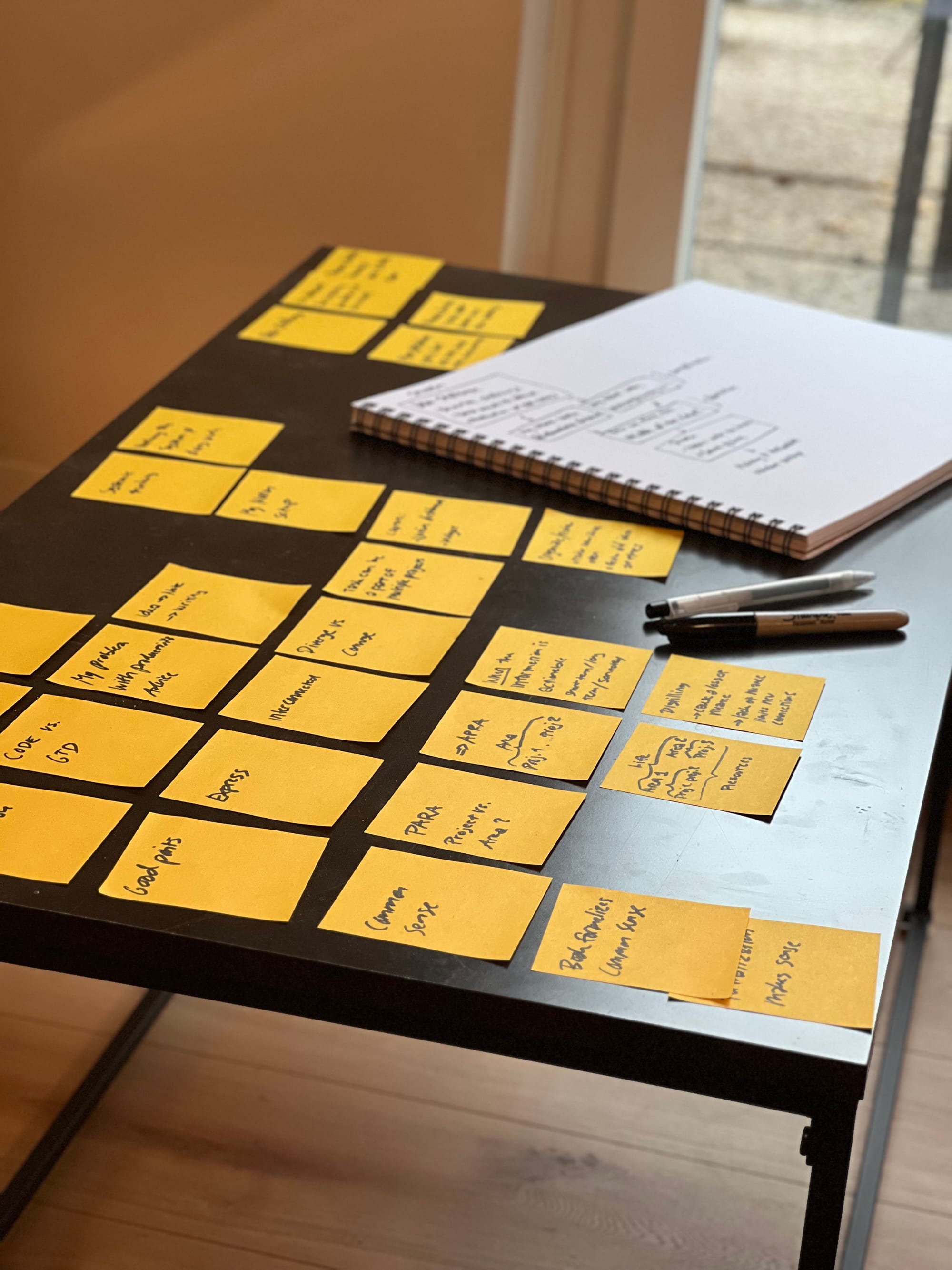
Laptops are fine for writing, but they don’t allow for the freeform thought-mapping I rely on. And even though I use one of the smaller MacBooks, it’s still bulky—especially when I already have to lug around my work laptop.
So, I finally caved and bought an iPad Pro with the Apple Pencil Pro (not a sponsored ad, unfortunately). It’s not perfect, but it allows me to both write and draw on a single, ultra-portable device. So how do I actually use it to stay creative on the go?
The Three-Step Creative Workflow
My creative process boils down to three main phases: capturing, processing, and expressing. Here’s how I’ve optimized each step for mobility:
1. Reading & Capturing Ideas
- For long-form reading: I use the Kindle app on my iPad (I do own a Kindle device, but that would be one more extra device to lug around).
- For articles & newsletters: I rely on Readwise Reader, my favorite app for collecting and highlighting insights.
- For note-taking: Readwise automatically syncs my highlights and notes into Notion, where I can revisit and expand on them later.
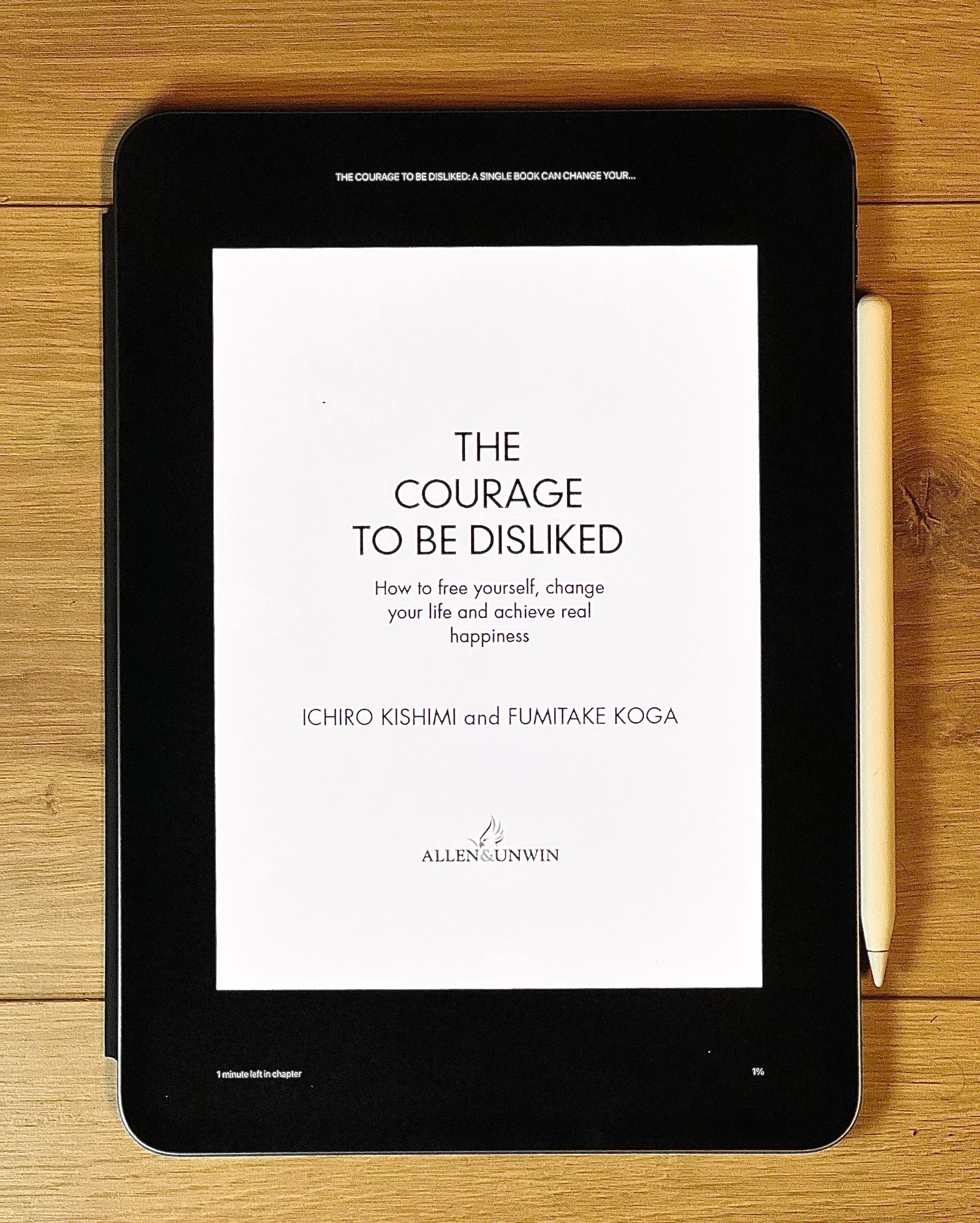
2. Processing & Mapping Out Thoughts
- While Notion is great for structured notes, my ideas don’t flow well in pure text form. I needed something more visual and expansive.
- After testing various apps (Apple Notes, Goodnotes), I landed on Apple’s Freeform app. It’s a massive infinite canvas that lets me zoom in and out, scribble thoughts, and visually connect ideas—effectively replacing my A3 notepad.
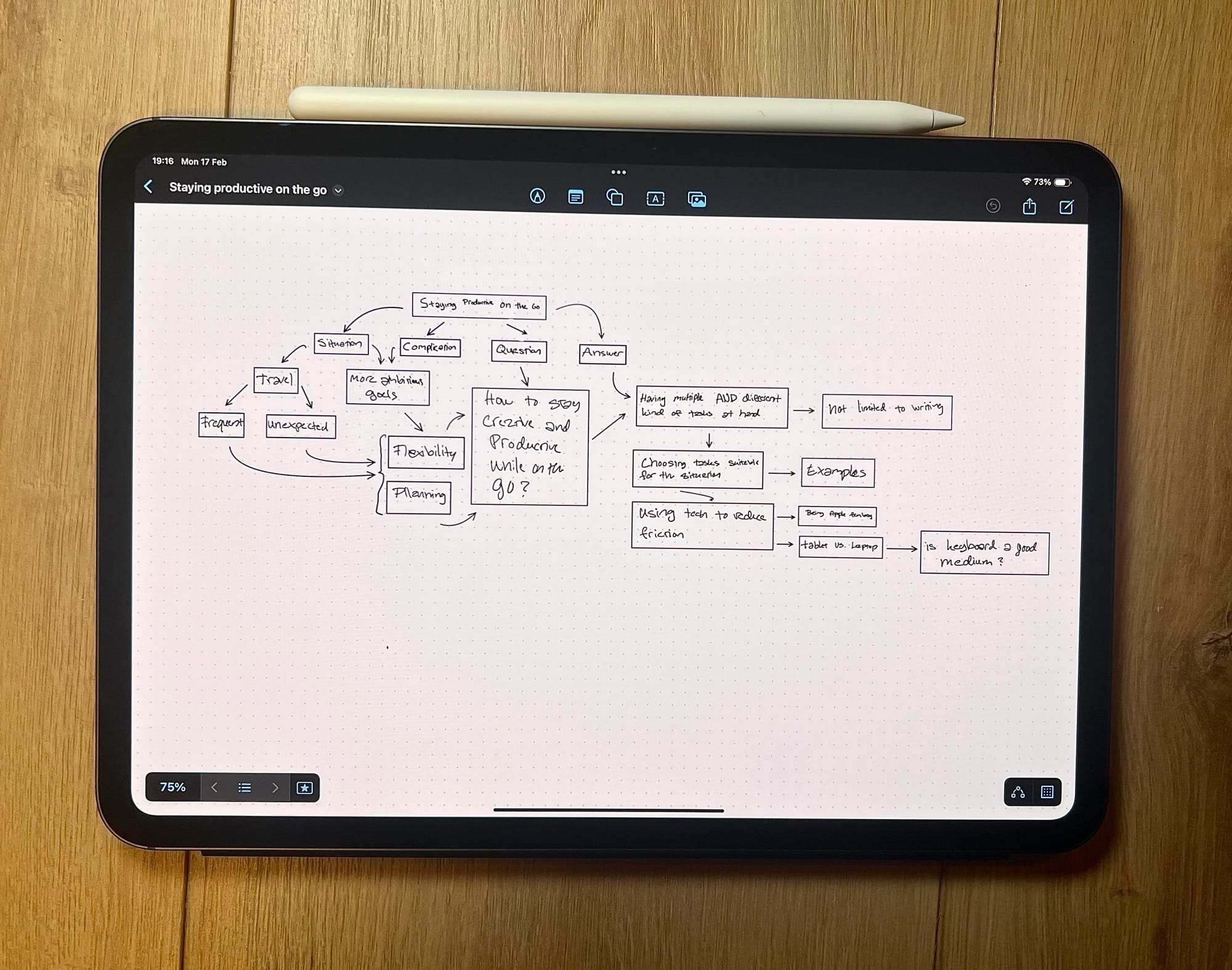
3. Writing & Drafting
- Drafting and final writing happens directly in Notion, which syncs across all devices.
- I’m in the middle of reorganizing my Notion workspace to better support The Spongia Project—stay tuned for a deep dive into that setup soon.
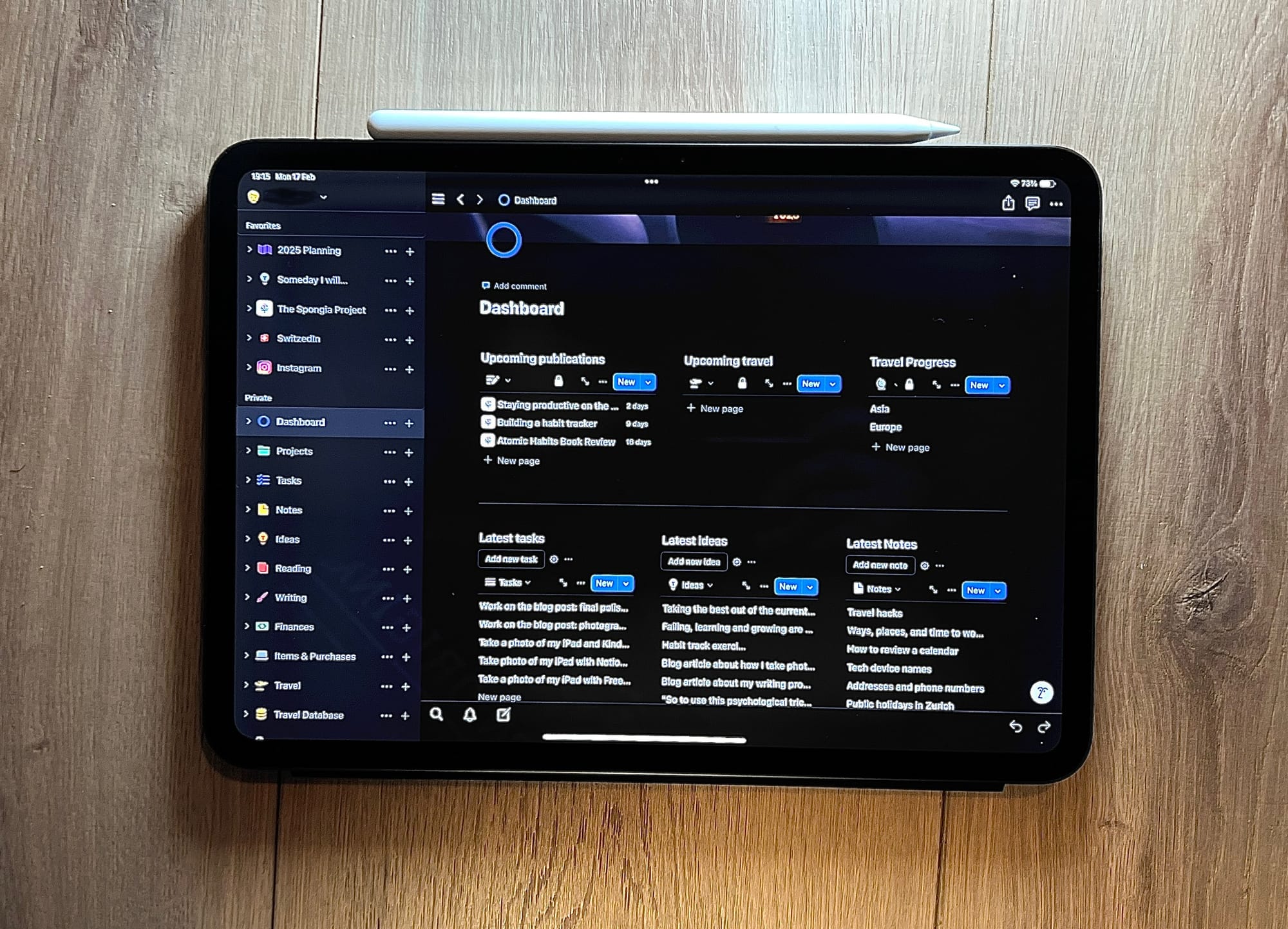
One Final Hack: Project Stacking for Maximum Flexibility
One of my best travel productivity tricks? Always have multiple projects in different phases.
- A plane might not be ideal for drafting full articles, but it’s great for reading and note-taking.
- A quiet hotel room might be a perfect deep-work space, but an airport lounge might be better for brainstorming ideas.
By keeping a mix of tasks in progress, I can match my work to my environment. This prevents me from feeling stuck when conditions aren’t ideal—because, let’s be honest, they rarely are.
At the end of the day, staying productive on the go isn’t about having the perfect tools—it’s about embracing the imperfection. Travel forces you to improvise, adapt, and work with what you have. Whether it’s a hotel desk with a crappy chair, a tiny airplane tray, or just a spare moment waiting for a train, the key is flexibility.
Now, how do you stay creative when you’re away from your usual workspace? Got any lesser-known productivity tricks? Drop them below—I might just steal them for my next trip.

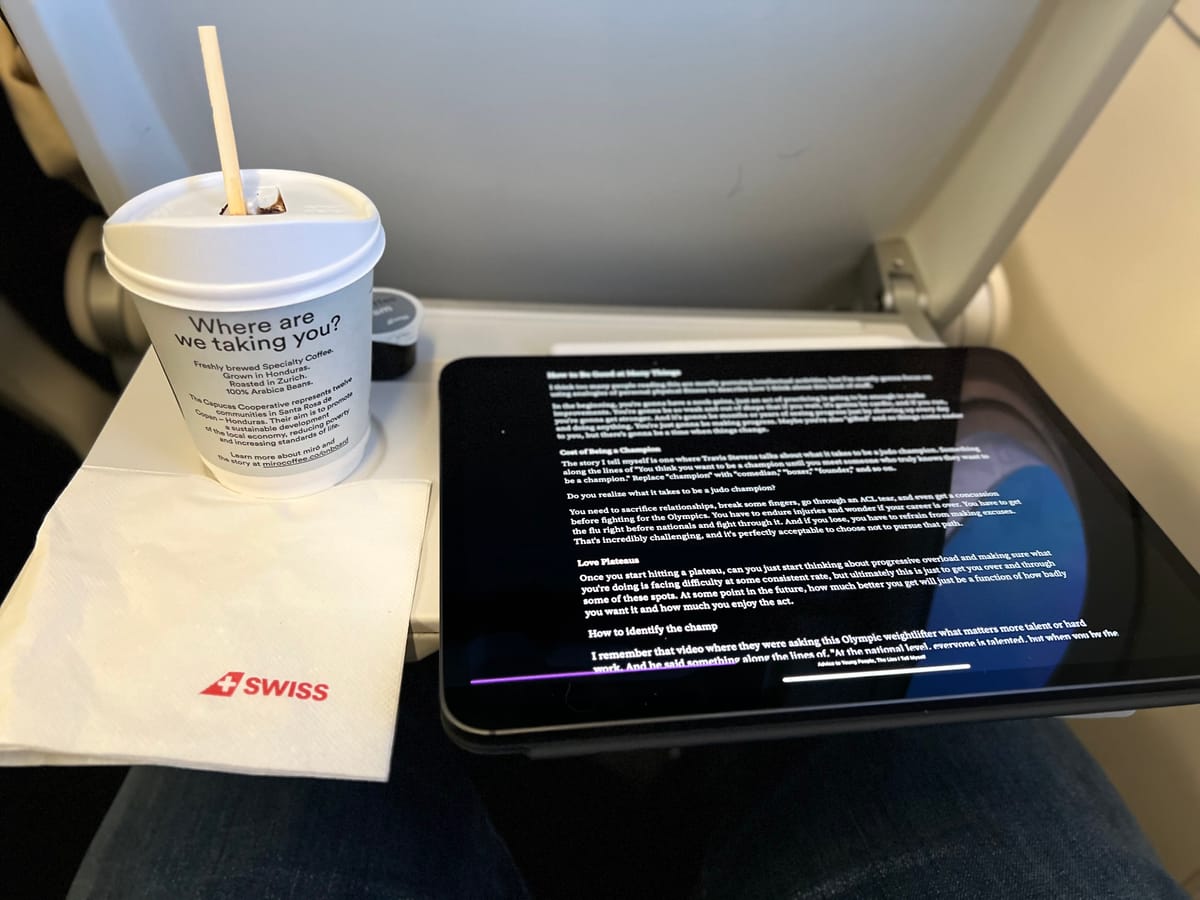

Member discussion: